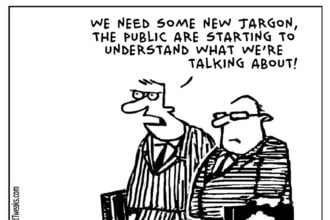Decision Management can only succeed if the business rules for decisions can be effectively managed. Effective management must involve both business and IT organizations. There must be alignment and collaboration if the business rules are to be managed correctly. Indeed empowering this collaboration is the primary value of a business rules management system. Yet most systems development methodologies are predicated on a separation between the business and IT. These methodologies create artifacts and manage processes to try and minimize this separation but they take it for granted.
Decision Management can only succeed if the business rules for decisions can be effectively managed. Effective management must involve both business and IT organizations. There must be alignment and collaboration if the business rules are to be managed correctly. Indeed empowering this collaboration is the primary value of a business rules management system. Yet most systems development methodologies are predicated on a separation between the business and IT. These methodologies create artifacts and manage processes to try and minimize this separation but they take it for granted. To successfully adopt business rules and manage decisions an agile systems development approach specifically for business rules is required.
Some months back Jerome Boyer and Hafedh Mili published a great book on Agile Business Rule Development: Process, Architecture, and JRules Examples. ABRD is unique in that it is an agile methodology that promotes iteration and the early use of a business rules management system. Focusing on incremental and iterative development it has been specifically developed to handle new artifacts like business rules, decision points and more. It applies the key tenets of the agile manifesto and takes advantage of the power of business rules management systems to deliver on those tenets. It shows how using a shared business rules definition allows you to value “Individuals and interactions over processes and tools”. It prototypes early using these shared rule definitions to ensure “Working software over comprehensive documentation” It leverages the ability of non-technical business people to understand and even edit business rules to deliver “Customer collaboration over contract negotiation”. Finally it relies on the faster update and deployment cycles of a business rules management system to ensure projects put “Responding to change over following a plan”.
The Agile Business Rules Development (ABRD) methodology at the heart of the book was donated to the open source community several years ago by ILOG, now part of IBM. I was immediately impressed with both ABRD and the Eclipse Process Framework in which it was presented. I have worked on many decision management system projects that used business rules and business rules management systems and I have a background in methodology. ABRD is a well thought out methodology, embodying many best practices for business rules-based development that could help organizations build Decision Management Systems and adopt business rules management systems.
Some companies make the mistake of assuming that decision management and business rules can be adopted by an IT department without changing existing governance and development approaches. Others assume that they can handle business rules as part of modeling and managing business processes. In fact, new approaches and techniques are required. An agile approach combined with the use of business rules management systems for managing the logic in decision-making components has allowed the companies I work with to empower business users and analysts to collaborate effectively with their IT teams and even to control some of the logic themselves. Effective management of the decision logic has improved decision accuracy, compliance and consistency.
Companies that adopt a business rules management system and use it to manage decisions are more agile, better aligned and have systems and processes that are just plain smarter. ABRD has many important characteristics for such an organization: It treats business rules, and decisions, as separate artifacts; It links these artifacts to your business motivation and shows how they can be packaged up to deliver decision services, coherent decision-making components in a Service-Oriented Architecture; And it focuses on using this technology to get a core component up and running quickly so that it can be involved and continuously improved as you learn and as your business changes.
With this book, Jerome and Hafedh have written more than just a complete guide to ABRD. This book provides an introduction to business rules and to the ABRD methodology. It discusses key ABRD topics like rule harvesting (from elicitation to analysis) and rule prototyping and design. It outlines key design patterns and covers critical issues in everything from rule authoring to deployment and testing. Rule performance, rule governance and detailed descriptions of how to do all this with IBM’s business rules management system round out a thorough and complete book.
If you plan to use business rules to extend and manage the decisions in your operational environment, something I highly recommend, this book will show you how to use an agile approach to do so. You can buy it here.






